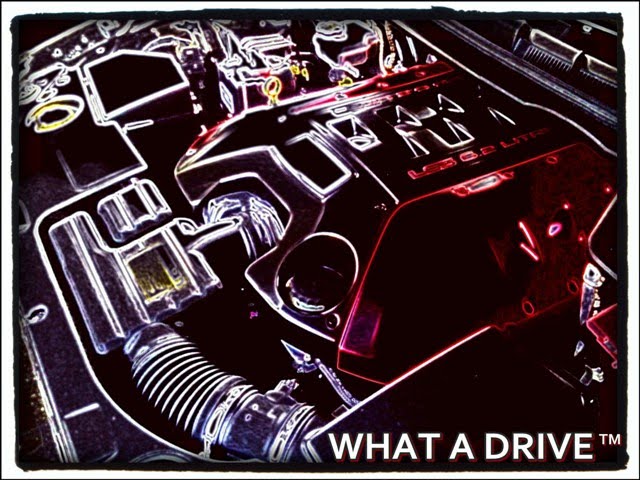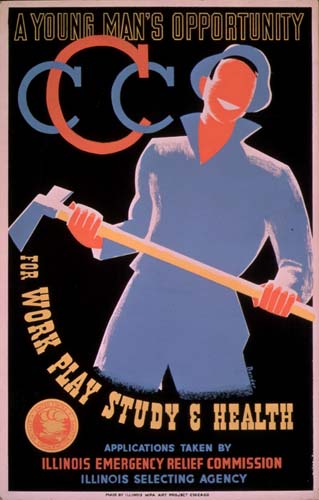There has been a lot of talk in the mainstream media of late about the “Mat Rempit” scourge. More often than not, these commentaries are preoccupied with demonising the Rempits rather than providing a long term solution. Stiffer penalties and jail time is all very well and good but it will not put an end to this serious social problem. Nevertheless, it would seem that everyone’s prayers have been answered. Just recently, the Malaysian Police have announced that no longer will these hooligans be called Mat Rempit, but now as Samseng Jalanan (Road Thugs) who face serious jail time if caught (as opposed to the usual practice of just fining them). To this end, the Police seek to amend Section 42 of the Road Transport Act 1987 to make jail sentences mandatory.

"One thug attacked Latha, splashing a can of 'Red Bull' energy drink on her face. The sweet-sour liquid stung her eyes, temporarily blinding her as the thug pushed her down, hit her with the drink can and snatched her gold chain and handphone"
Why are the Mat Rempit the way they are today? If we were to look back in history, we would notice that many civilizations had to deal with a counterculture movement at one time or another. The most recent example of this would be the hippie movement of the 1960s in America. A counterculture is a culture with values and mores that run counter to those of established society. According to Professor Rozmi Ismail, head of psychology at the School of Psychology and Human Development at Universiti Kebangsaan Malaysia, the Mat Rempit number in the hundreds of thousands. So it would be fair to say that the Mat Rempit is a Malaysian counterculture movement. For example, its members go against social norms by refusing to observe the rule of law (i.e. snatching handbags) in order to get what they want, which is essentially a quick fix - why work towards owning an iphone when you can just steal one?
So who is to blame for this flawed sense of logic? Some commentators squarely put the blame on the shoulders of parents. They believe that the Mat Rempit are a product of large Malay families living in low-cost housing areas. Their parents are too busy putting food on the table and juggling jobs that their kids grow up with the wrong set of values. Cramped living conditions also means that the young prefer to spend their time outdoors, often frequenting shopping centres and street malls. In the process, they come into contact with other youths of similar background. Being young and naive, they are easily influenced by their new acquaintances and are slowly introduced to the life of the Mat Rempit. Lacking guidance, not excelling in their studies and unable to find steady work (some don’t even want to work) some resort to criminal activities in order to get what they want. The motorcycle then becomes a tool from which they can seek excitement, while at the same time, assists them in carrying out their evil deeds. This could be the main reason why the Mat Rempit have become such a widely documented problem – they are able to cover more ground and roam the streets in search of exhilaration and loot.
Immediately what comes to people’s minds is to clamp down hard on these out of control hooligans. Tighter enforcement by the police and more severe penalties might persuade some wayward youths to stop prowling the streets. Deterrence after all is the best policy when it comes to crime prevention but it doesn’t really stop the spread of a counterculture. In fact, it might actually make matters worse since the Mat Rempit have shown to be unreasonable individuals. Furthermore, sending large numbers of young people to jail would only swell the already burgeoning prison population and put a drain on taxpayer’s money. This will also create a prison culture, with its own set of problems (i.e. repeat offenders, hardcore criminals etc).
A Harvard Professor once said that “we cannot continue as we have been with respect to gangs, gang violence, and the communities most affected by both. Gangs and our response to gangs alike have grave implications. The lives of individuals and of a community can be destroyed by gang violence. But those lives can also be destroyed by the demonization of offenders and what follows in its wake”. The man who said these words is Professor David M. Kennedy, who developed and directed the Boston Gun Project. It was a ground breaking policing exercise aimed at reducing serious youth violence. Its chief intervention, Operation Ceasefire, implemented in mid 1996, appears to have been responsible for a 60% reduction in homicide victimization among those Bostonians aged 24 and under.
Kennedy’s approach is supported by a paper published in 2007 by Dr Margaret Shaw, a sociologist and criminologist and Director of Analysis and Exchange at the International Centre for the Prevention of Crime (“ICPC”). In it she states that “it is becoming increasingly clear that the escalation of punitive responses to youth violence in the United States, among other countries, is unsustainable. Viewing violence as a public health problem opens up a much greater variety of responses and there are good examples of effective prevention alternatives. Overall, the experiences of countries in the North have shown that carefully balanced and planned strategies can help prevent and reduce youth crime” (The article titled 'Comparative Approaches to Urban Crime Prevention Focusing on Youth', was published by the ICPC. It is a thematic analysis that looks at concrete approaches to urban crime prevention - especially in relation to youth and youth gangs - in a range of countries in the North and the South. These include both prevention strategies and programmes).
This is not to say that I am against the idea of being tougher with the Mat Rempit but there has to be a balanced approach. In 2005, the 11th United Nations Congress on Crime Prevention and Criminal Justice to Discuss Criminal Justice Reform developed new guidelines (contained in the Economic and Social Council resolution 2002/13) so as to provide a basis for the development of effective strategies for responding to youth violence and at-risk youth, including: (a) Inclusive approaches which reduce youth marginalization; (b) Participatory approaches; (c) Integrated multisectoral strategies; (d) Balanced strategies which include early intervention, social and educational programmes, restorative approaches and crime control; (e) Targeted and tailored strategies and programmes to meet the needs of specific at-risk groups; (f) Approaches which respect the rights of children and young people. If the government were to apply these five principles when targeting at risk youths among the urban and rural poor, they might be able to stop the growth and appeal of the Mat Rempit counterculture. Also, in the next paragraph, I will propose a restorative justice programme which can be implemented in lieu of imprisonment.
As I had mentioned before, large scale culling of the Mat Rempit population is going to overwhelm the carrying capacity of Malaysia’s prisons and create a new prison culture of young, vicious hardcore criminals (the kinds we see in American prisons). What we need is a balanced approach. In the event that a Mat Rempit is caught, it is my suggestion that the authorities should give the individual a choice - go to jail or perform public service and get paid for it. As a basis for such a programme, the government could look to what U.S. President Franklin D. Roosevelt (“FDR”) did during the Great Depression. The Civilian Conservation Corps (“CCC”) was a public work relief program for unemployed men and it focused mainly on natural resource conservation efforts from 1933 to 1942. As part of the New Deal legislation proposed by FDR, the CCC was created firstly, to help reduce the high unemployment rate stemming from the Great Depression and secondly, to carry out large scale natural resource conservation programs on federal and state lands. Its members lived in camps, wore uniforms, and were subjected to quasi-military discipline. Not many of them had more than a year of high school education and few had work experience beyond the occasional odd job.
The CCC was one of the most successful of the New Deal programs and at its height, employed well over 2.9 million young men between the ages of 17 and 35. They were located throughout the US in over 2000 camps. The arrangement was that the men would sign on with the CCC for up to 6 months, be put into crews and carry out conservation projects in National Parks and Forests. They also built bridges, repaired dams, erected fences and implemented erosion prevention measures. The men received a wage of $30 per month, but they had to send $25 back to their families so that the money was made available to their loved ones. This measure helped boost the economies of the towns and cities that the men came from.
In the case of a Malaysian CCC, the Mat Rempit would have to sign on for a much longer stint. So instead of 6 months, it would last till the end of their prison sentence. Their pay would also have to be reasonable, perhaps the equivalent of the basic wage of a labourer. The types of work that they would carry out would be for example, shoring up our rivers and strengthening drainages, so as to prevent future floods. The government could also pass a law that compels local construction companies, to hire Malaysian CCC enrolees, to work on their building sites. This would reduce our country’s dependence on foreign labour and also give the Mat Rempit a skill from which they can find future employment. It should be noted that the success of FDR’s CCC was mainly due to the involvement of the United States Military, which supervised and maintained discipline among the enrolees. The Malaysian Armed Forces (“MAF”) could also perform in a similar capacity, thus providing a new platform from which the military can improve its social commitment to the country.
In conclusion, it can be said that there is a need to recognize the Mat Rempit dilemma as a public health problem and not simply treat it as a security issue. The Malaysian Police can only act so far as to prevent violence and lawlessness but it cannot stop the growth of a counterculture movement. This task must be accomplished by the government which needs to engage the problem at all levels. Whether it be improving counselling services in schools or organizing communities in low-cost housing areas to keep their teenagers off the streets and from loitering in malls, so much can be done to improve this predicament rather than relying on arrests and jail time. There is no shortage of successful public health programs, in other countries that we can learn from, in order to formulate an effective policy of our own. Hopefully it is not too late for policymakers to act because the longer they delay, the more serious the problem will be and this will have far reaching consequences for Malaysia.











2 comments:
nice article bro..
What you need to see is whether the CCC program is relevant in society today. CCC was a good 50 or so years ago. Is the U.S of A still practising such a system? Would Mat Rempits want RM30 per day of working when they can steal the same amount within a minute? Wouldn't they like Malaysian prisons since they serve free food and they only do odd jobs to pass time?
On a Malaysian point of view, materialism holds the key to everything. The government holds the key by ensuring the economy is strong and can provide more than just food on the table but that new Nokia phone and upgrade parts for the rempit's motors that will satisfy them. Its a material world out there, we are but a few spirits who have more sense than the rempits.
Post a Comment